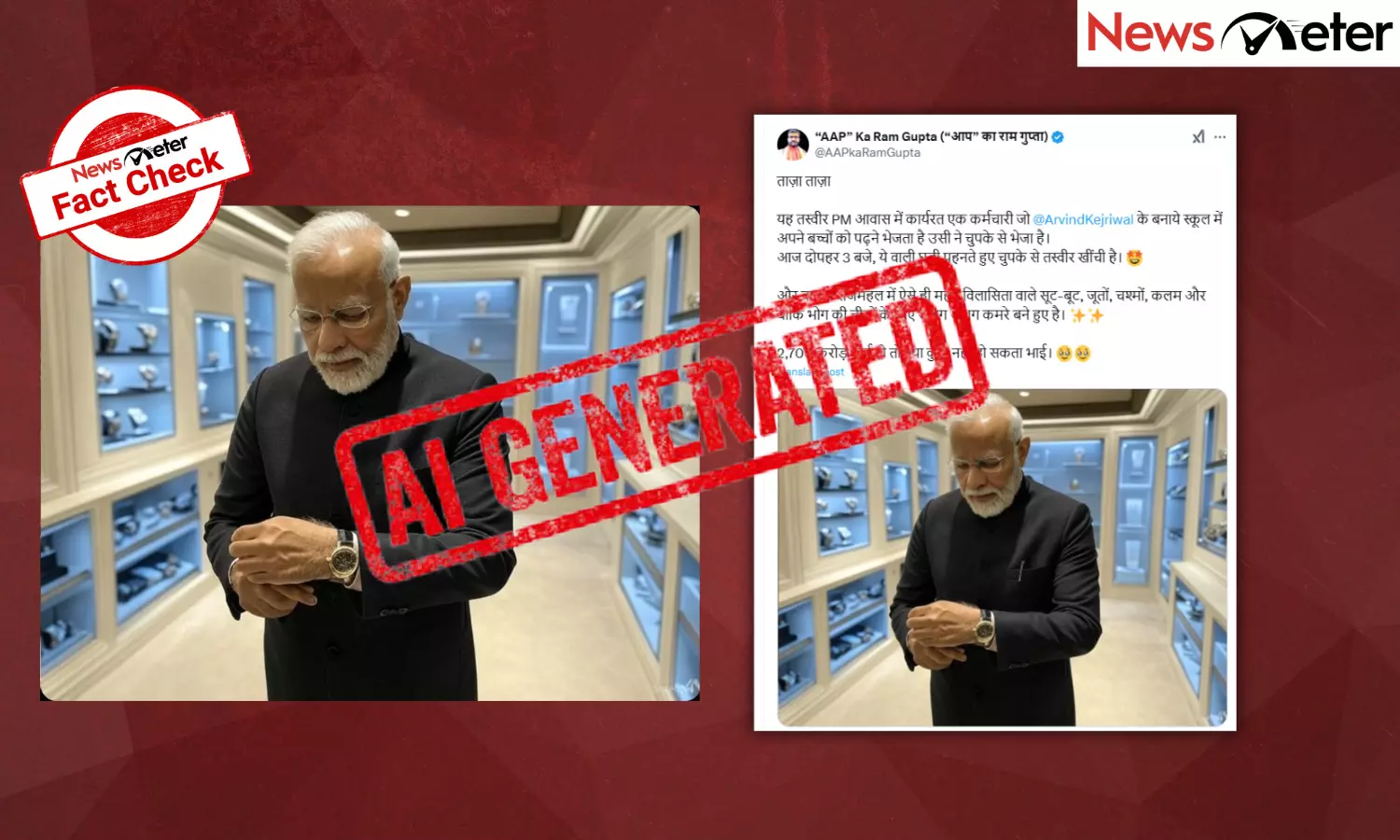Hyderabad: Ahead of the Delhi Assembly elections, a war of words has unfolded between the Bharatiya Janata Party (BJP) and the Aam Aadmi Party (AAP) over allegations of extravagance at the chief minister’s residence. While BJP leaders criticised former Delhi CM Arvind Kejriwal for constructing a lavish ‘Sheesh Mahal’ for himself, the AAP hits back, accusing prime minister Narendra Modi of residing in a ‘Rajmahal’ worth Rs 2,700 crores.
In this context, an image of PM Modi seemingly wearing an expensive watch in a room showcasing wall-to-wall expensive objects has gone viral.
An X user shared the image and wrote, “This photo was secretly sent by an employee working at the PM’s residence but sends his children to the schools built by Arvind Kejriwal. He secretly clicked this picture today at 3 pm while the PM was wearing this costly watch. He revealed that in this ‘Rajmahal’, there are separate rooms dedicated to expensive luxury items such as fancy suits, shoes, glasses, pens and other indulgent items. With Rs 2,700 crores spent, what isn’t possible, brother?” (Translated from Hindi) (Archive)
NewsMeter found that the claim is false. The ‘leaked photo from PM’s residence’ is an AI-generated image.
Upon close examination of the image, we identified a watermark for ‘Grok AI’. Grok Image Generator is a generative AI tool designed to create art and visuals from text inputs. Its official website states that it is specifically built for artistic creations.
Further scrutiny of the image revealed several inconsistencies, common among AI-generated images.
Some of the obvious discrepancies include the frame of the prime minister’s spectacles appearing incomplete and fingers showing visible distortion. Additionally, the overly glossy texture of the image and the blurred background are signs of AI-generated media.
Next, we ran the image through AI detection tools to decide its authenticity.
Hive Moderation identified the image as AI-generated with an aggregate confidence score of 98.4 per cent. Wasitai confirmed that the image, or a substantial portion of it, was created by AI. Another tool, AI Image Detector, analysed the image and determined it to be 53.26 per cent AI-generated and 45.18 per cent human-generated.
Therefore, we conclude that the viral image was fabricated using AI.
